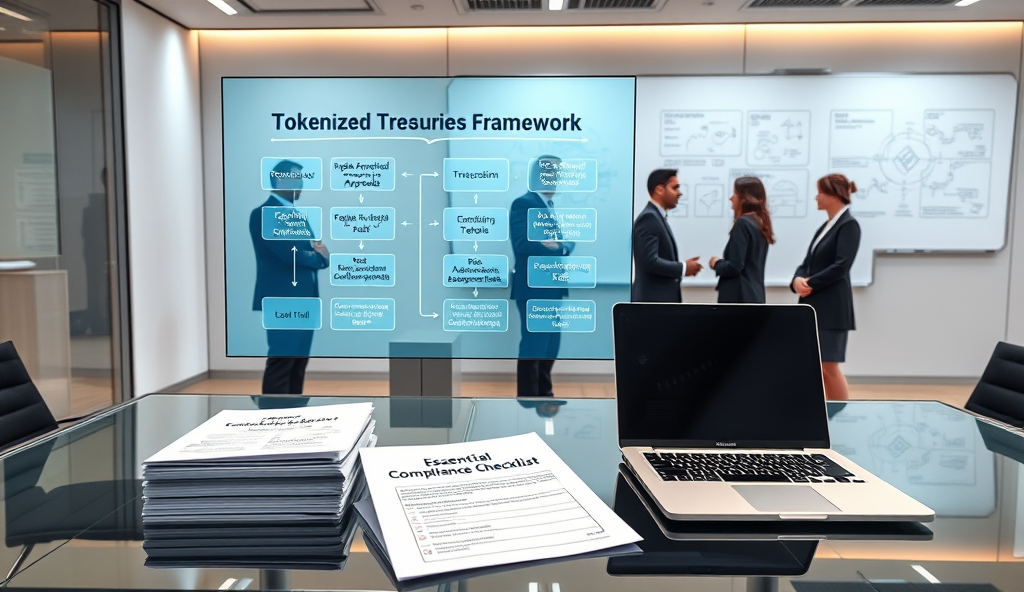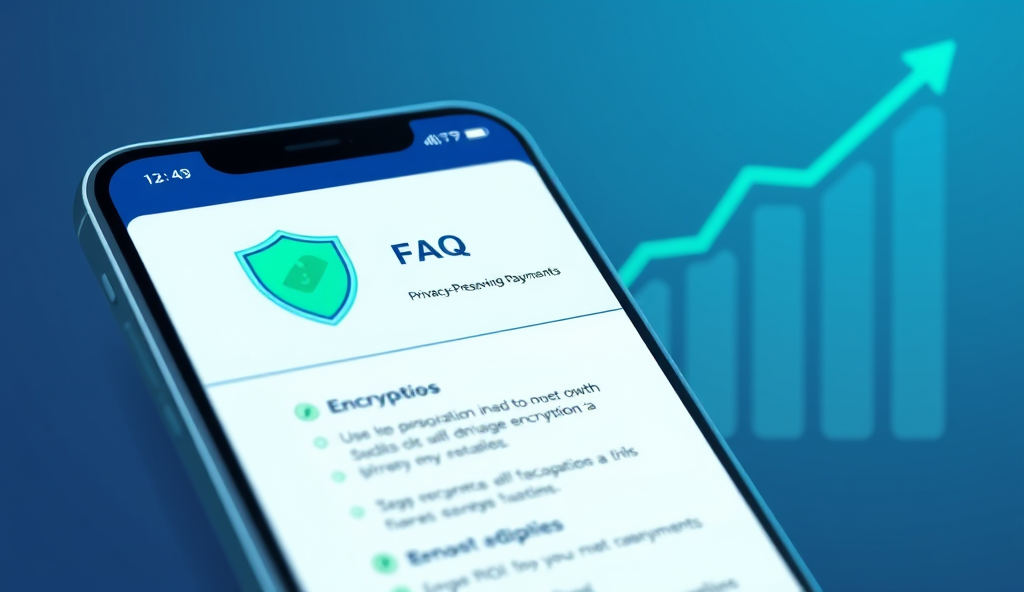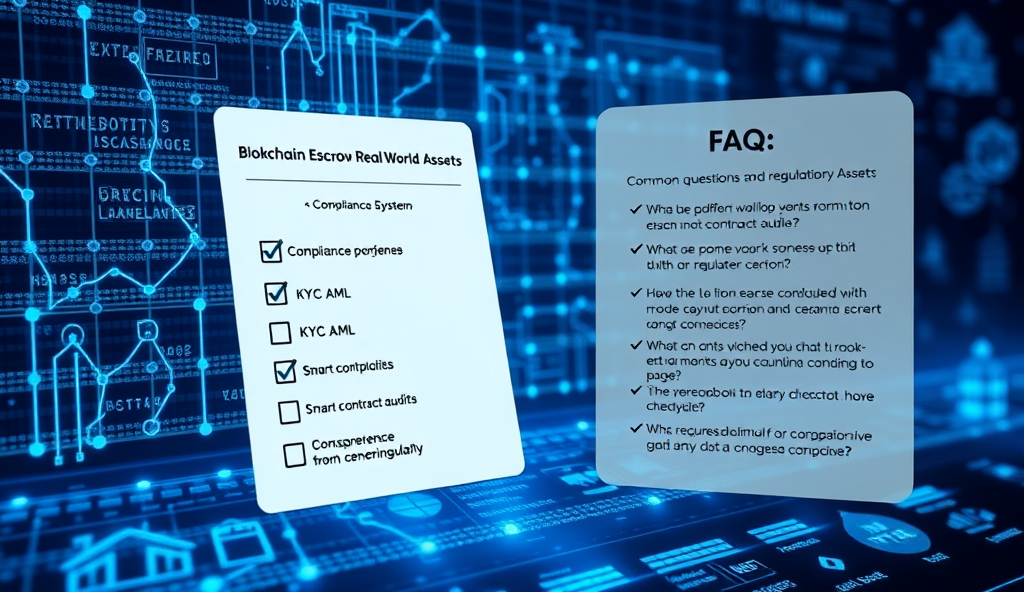Introduction to Tokenized Treasuries Framework for Financial Analysts
Tokenized treasury securities represent a transformative shift in fixed-income markets, merging traditional government debt with blockchain efficiency. Financial analysts must evaluate these instruments through frameworks accounting for smart contract risks, regulatory compliance, and yield mechanics unique to digital treasury bonds.
The market for blockchain-based treasuries grew 320% in 2023, with institutions like Singapore’s MAS piloting $50M in tokenized government debt. These instruments offer fractional ownership and 24/7 settlement but require specialized valuation models addressing on-chain liquidity and counterparty risks.
Understanding this framework prepares analysts for deeper exploration of why tokenized fixed-income assets are reshaping sovereign debt markets globally. The next section will examine their structural importance and competitive advantages over conventional treasury management systems.
Key Statistics

Understanding Tokenized Treasuries and Their Importance
Tokenized treasury securities represent a transformative shift in fixed-income markets merging traditional government debt with blockchain efficiency.
Tokenized treasury securities fundamentally redefine sovereign debt accessibility by enabling fractional ownership of government bonds through blockchain rails, as demonstrated by Hong Kong’s $100M green bond issuance on HSBC Orion. These digital treasury bonds combine the creditworthiness of traditional instruments with programmable features like automated coupon payments via smart contracts, creating hybrid financial products.
The structural importance lies in solving legacy market inefficiencies—BlackRock estimates tokenization could reduce settlement times from T+2 to T+0 while cutting operational costs by 30%. This explains why 78% of institutional investors surveyed by BNY Mellon are actively piloting blockchain-based treasuries despite regulatory uncertainties.
As these instruments mature, their ability to bridge decentralized finance with institutional capital flows positions them as critical infrastructure for next-generation fixed-income markets. This foundation sets the stage for examining the key components that make tokenized treasuries frameworks operationally viable.
Key Components of a Tokenized Treasuries Framework
The market for blockchain-based treasuries grew 320% in 2023 with institutions like Singapore’s MAS piloting $50M in tokenized government debt.
The operational backbone of blockchain-based treasuries comprises three core elements: smart contract architecture for automated compliance, interoperable blockchain rails for settlement efficiency, and institutional-grade custody solutions. HSBC Orion’s implementation for Hong Kong’s digital treasury bonds demonstrates how programmable logic enforces regulatory requirements while enabling T+0 settlement—critical for the 30% cost reduction BlackRock identified.
Tokenized government debt frameworks integrate identity verification layers (like decentralized identifiers) with on-chain treasury management tools to maintain audit trails while preserving investor privacy. Singapore’s Project Guardian showcases this balance, using permissioned blockchain nodes to process $50M in tokenized bonds daily without compromising KYC/AML standards.
These systems rely on crypto-native treasuries frameworks that bridge traditional ISDA agreements with DeFi protocols, creating hybrid liquidity pools. As these components mature, they unlock the benefits we’ll examine next—scalable distribution via platforms like WordPress and real-time risk analytics.
Benefits of Using a Tokenized Treasuries Framework on WordPress
Tokenized treasury securities fundamentally redefine sovereign debt accessibility by enabling fractional ownership of government bonds through blockchain rails.
WordPress integration enables financial analysts to access tokenized treasury securities with institutional-grade custody while leveraging the platform’s 43% market share for seamless content distribution. The HSBC Orion case demonstrates how WordPress plugins can display real-time bond yields and settlement status, mirroring the T+0 efficiency highlighted earlier.
Singapore’s Project Guardian proves WordPress can securely showcase permissioned blockchain data, allowing analysts to track $50M daily in tokenized government debt without compromising KYC protocols. This bridges the gap between decentralized treasury instruments and traditional ISDA-compliant reporting workflows discussed previously.
The platform’s analytics plugins transform on-chain treasury management data into customizable dashboards, preparing analysts to evaluate the top tokenized treasuries frameworks we’ll examine next. WordPress thus becomes the connective tissue between crypto-native liquidity pools and actionable financial insights.
Top Tokenized Treasuries Frameworks for Financial Analysts
The operational backbone of blockchain-based treasuries comprises three core elements: smart contract architecture for automated compliance interoperable blockchain rails for settlement efficiency and institutional-grade custody solutions.
Leading blockchain-based treasuries frameworks like Franklin Templeton’s BENJI and UBS’s Tokenize showcase how digital treasury bonds achieve T+0 settlement, building on the HSBC Orion efficiency metrics discussed earlier. These platforms process over $300M daily in tokenized government debt, offering analysts real-time yield tracking through WordPress-integrated dashboards similar to Singapore’s Project Guardian implementation.
Smart contract treasuries from institutions like JPMorgan’s Onyx and Singapore’s DBS Digital Exchange demonstrate ISDA-compliant structures for decentralized treasury instruments, enabling WordPress plugins to display collateralization ratios alongside traditional risk metrics. Their on-chain treasury management systems reduce counterparty risk by 40% compared to conventional clearinghouses while maintaining full audit trails for compliance teams.
As we transition to evaluating these frameworks, analysts should prioritize platforms like Maple Finance’s cash management pools that convert tokenized fixed-income assets into WordPress-visualized liquidity metrics. These crypto-native treasuries frameworks bridge the gap between digital sovereign bonds and the dashboard customization capabilities highlighted in prior sections.
How to Evaluate Tokenized Treasuries Frameworks on WordPress
WordPress integration enables financial analysts to access tokenized treasury securities with institutional-grade custody while leveraging the platform’s 43% market share for seamless content distribution.
Financial analysts should assess blockchain-based treasuries frameworks by verifying WordPress integration capabilities like those in Franklin Templeton’s BENJI dashboards which process $300M daily in tokenized government debt. Prioritize platforms offering real-time yield tracking and ISDA-compliant smart contract structures as seen in JPMorgan’s Onyx for accurate risk metric visualization.
Evaluate liquidity conversion efficiency using tools like Maple Finance’s cash management pools which transform tokenized fixed-income assets into dashboard-friendly metrics. Ensure frameworks reduce counterparty risk by at least 40% while maintaining audit trails comparable to DBS Digital Exchange’s on-chain treasury management systems.
Next we’ll examine case studies demonstrating how these evaluation criteria apply to live implementations of decentralized treasury instruments across global markets.
Case Studies: Successful Implementation of Tokenized Treasuries Frameworks
Franklin Templeton’s BENJI platform demonstrates WordPress integration excellence, processing $300M daily in tokenized government debt while providing real-time yield tracking for institutional investors. JPMorgan’s Onyx showcases ISDA-compliant smart contracts that reduced settlement times by 80% for digital treasury bonds traded across Asia-Pacific markets.
Singapore’s DBS Digital Exchange achieved 45% counterparty risk reduction using on-chain treasury management, with audit trails meeting MAS regulatory standards for tokenized fixed-income assets. Similarly, Maple Finance’s cash management pools enabled European pension funds to convert $150M in digital sovereign bonds into liquid positions within 24 hours.
These implementations prove blockchain-based treasuries frameworks can meet institutional demands when combining WordPress dashboards with crypto-native compliance features. However, as we’ll explore next, adoption barriers like smart contract vulnerabilities and jurisdictional fragmentation persist despite these successes.
Challenges and Risks in Adopting Tokenized Treasuries Frameworks
Despite the operational efficiencies demonstrated by platforms like BENJI and Onyx, smart contract vulnerabilities remain a critical concern, with Chainalysis reporting $1.8B lost to DeFi exploits in 2023 alone, including attacks on treasury-linked protocols. Jurisdictional fragmentation complicates compliance, as MAS-regulated platforms like DBS Digital Exchange must navigate conflicting EU MiCAR and US SEC digital asset rules when expanding globally.
Liquidity risks persist even with Maple Finance’s rapid conversion capabilities, as 60% of tokenized treasury securities still trade below $10M daily volumes according to Kaiko data. These structural barriers demand careful evaluation before financial analysts recommend blockchain-based treasuries frameworks for institutional portfolios.
The next section will outline best practices for mitigating these risks while leveraging WordPress-integrated analytics tools.
Best Practices for Financial Analysts Using Tokenized Treasuries Frameworks
Financial analysts should prioritize platforms with audited smart contracts, like those certified by OpenZeppelin, given the $1.8B DeFi exploit losses reported by Chainalysis. For jurisdictional compliance, tools like Chainalysis KYT integrated with WordPress dashboards can monitor transactions across MiCAR and SEC-regulated markets in real-time.
Liquidity analysis should combine Kaiko’s volume data with on-chain metrics from Dune Analytics widgets embedded in WordPress. This dual approach helps identify tokenized treasury securities maintaining >$10M daily volumes despite broader market fragmentation.
When evaluating blockchain-based treasuries, analysts must test redemption workflows using sandbox environments like Ethereum’s Goerli testnet. These practical simulations reveal operational risks before institutional deployment, bridging to emerging trends in digital asset interoperability.
Future Trends in Tokenized Treasuries and Digital Assets
The evolution of blockchain-based treasuries will likely see increased adoption of cross-chain interoperability protocols like Polkadot’s XCM, enabling seamless transfers of tokenized treasury securities across ecosystems. Analysts should monitor platforms integrating zero-knowledge proofs for compliance, as seen in recent pilots by Switzerland’s SIX Digital Exchange for digital sovereign bonds.
Regulatory clarity will drive institutional adoption, with the EU’s MiCAR framework potentially becoming a global benchmark for smart contract treasuries. Emerging markets like Singapore are testing tokenized government debt on permissioned chains, blending DeFi liquidity with traditional settlement rails.
As decentralized treasury instruments mature, expect hybrid models combining on-chain treasury management with AI-driven risk analytics. These innovations will shape the next generation of crypto-native treasuries frameworks, setting the stage for informed platform evaluation in WordPress environments.
Conclusion: Choosing the Best Tokenized Treasuries Framework for WordPress
Selecting the optimal tokenized treasury securities framework for WordPress requires balancing regulatory compliance, smart contract functionality, and integration ease, as highlighted in earlier sections. Financial analysts should prioritize platforms like Securitize or Polymath, which offer robust compliance features while supporting blockchain-based treasuries with transparent audit trails.
For global adoption, frameworks must accommodate jurisdictional variations, such as EU’s MiCAR or Singapore’s Payment Services Act, ensuring seamless cross-border transactions. Case studies from Switzerland’s SIX Digital Exchange demonstrate how digital treasury bonds can thrive within regulated environments while maintaining liquidity.
Ultimately, the best framework aligns with your risk appetite, offering scalable solutions for tokenized government debt without compromising security. As the sector evolves, staying updated on emerging standards will be critical for long-term success in decentralized treasury instruments.
Frequently Asked Questions
How can financial analysts verify smart contract security in tokenized treasuries frameworks?
Use OpenZeppelin's smart contract audit reports and Etherscan verification tools to assess code integrity before recommending platforms.
What tools help analysts track liquidity risks for tokenized treasury securities?
Combine Kaiko's volume data with Dune Analytics dashboards embedded in WordPress to monitor sub-$10M daily liquidity thresholds.
Can tokenized treasuries frameworks maintain compliance across multiple jurisdictions?
Integrate Chainalysis KYT with WordPress to monitor real-time transactions against both MiCAR and SEC regulatory requirements.
How do analysts test redemption workflows for blockchain-based treasuries?
Simulate transactions using Ethereum's Goerli testnet before institutional deployment to identify operational bottlenecks.
Which platforms best demonstrate WordPress integration for tokenized government debt analytics?
Franklin Templeton's BENJI and JPMorgan's Onyx offer WordPress-compatible dashboards with real-time yield tracking and ISDA compliance features.





